Paul Gauguin, Where do we come from? What are we? Where are we going?
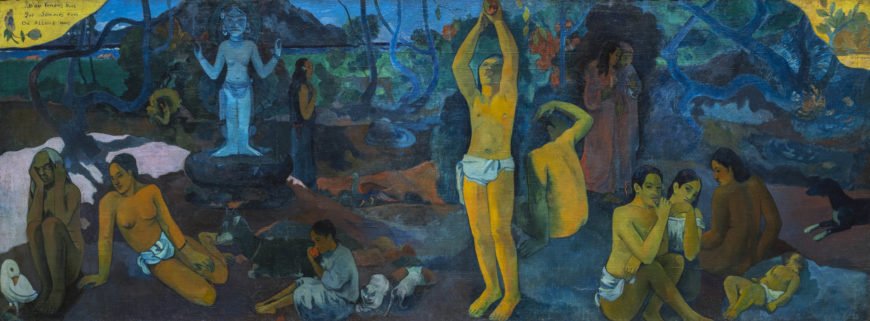
Where do we come from? What are we? Where are we going? is a huge, brilliantly colored but enigmatic work painted on rough, heavy sackcloth. It is Paul Gauguin’s largest painting, and he understood it to be his finest work.
Where are we going? represents the artist’s painted manifesto created while he was living on the island of Tahiti. The French artist transitioned from being a “Sunday painter” (someone who paints for his or her own enjoyment) to becoming a professional after his career as a stockbroker failed in the early 1880s. He visited the Pacific island Tahiti in French Polynesia staying from 1891 to 1893. He then returned to Polynesia in 1895, painted this massive canvas there in 1897, and eventually died in 1903, on Hiva Oa in the Marquesas islands.
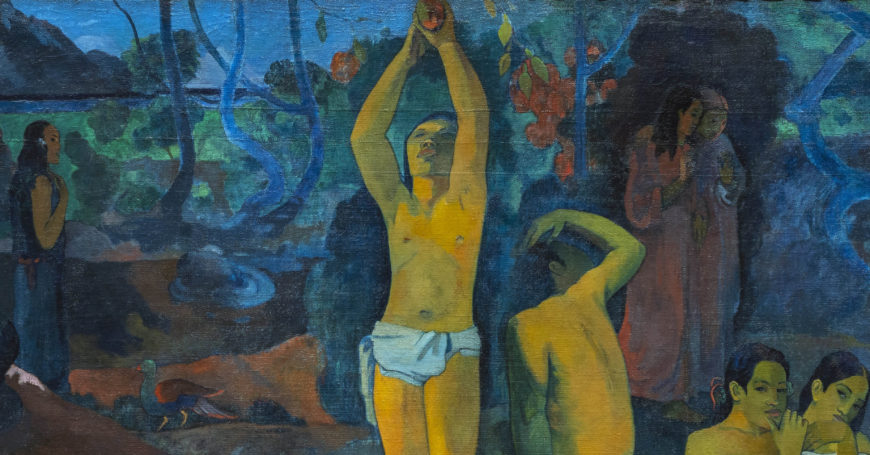
Gauguin completed Where are we going? at a feverish rate, allegedly within one month’s time, and even claimed to his friend that he went into the mountains to attempt suicide after the work was finished. Gauguin—ever the master of self-promotion and highly conscious of his image as a vanguard artist—may or may not have actually poisoned himself with arsenic as he alleged, but this legend was quite pointedly in line with the painting’s themes of life, death, poetry, and symbolic meaning.
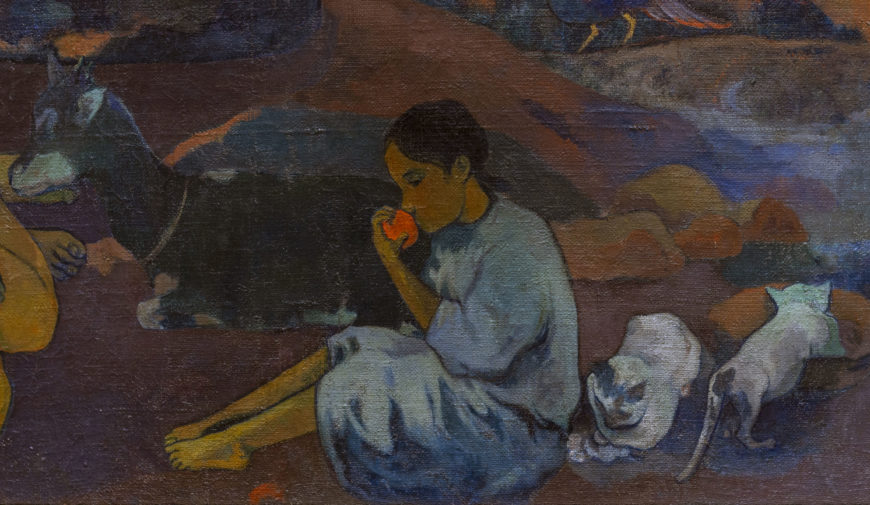
Gauguin himself provided a telling description of the painting’s esoteric imagery in a letter written in February 1898:
It is a canvas four meters fifty in width, by one meter seventy in height. The two upper corners are chrome yellow, with an inscription on the left and my name on the right, like a fresco whose corners are spoiled with age, and which is appliquéd upon a golden wall. To the right at the lower end, a sleeping child and three crouching women. Two figures dressed in purple confide their thoughts to one another. An enormous crouching figure, out of all proportion and intentionally so, raises its arms and stares in astonishment upon these two, who dare to think of their destiny. A figure in the center is picking fruit. Two cats near a child. A white goat. An idol, its arms mysteriously raised in a sort of rhythm, seems to indicate the Beyond. Then lastly, an old woman nearing death appears to accept everything, to resign herself to her thoughts. She completes the story! At her feet a strange white bird, holding a lizard in its claws, represents the futility of words…. So I have finished a philosophical work on a theme comparable to that of the Gospel.[1]
Gauguin suggests that the figures have mysterious symbolic meanings and that they might answer the questions posed by the work’s title. And, in the manner of a sacred scroll written in an ancient language, the painting is to be read from right to left: from the sleeping infant—where we come from—to the standing figure in the middle—what we are—and ending at the left with the crouching old woman—where we are going.
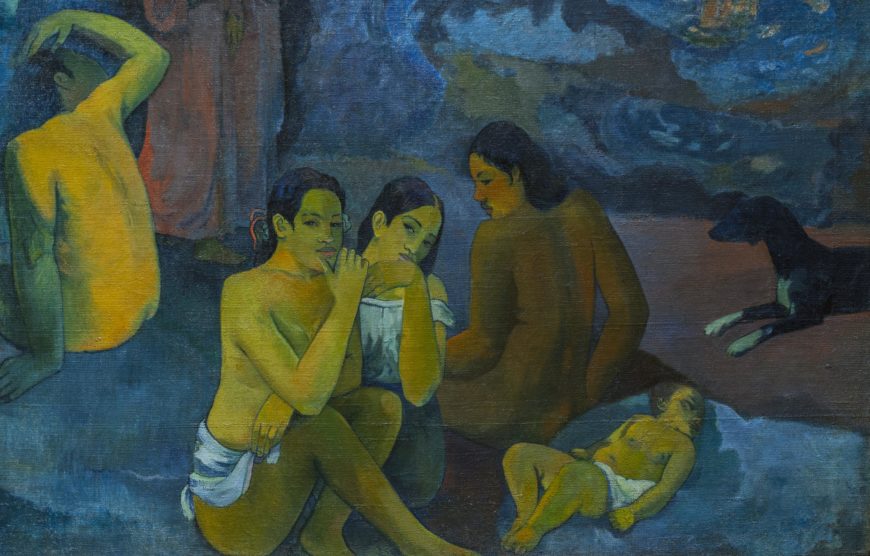
Stylistically, the composition is designed and painted to recall frescoes or icons painted on a gold ground. The upper corners have been painted with a bright yellow to contribute to this effect, and the figures appear out of proportion to one another—“deliberately so” as Gauguin wrote—as if they were floating in space rather than resting firmly upon the earth..[2]
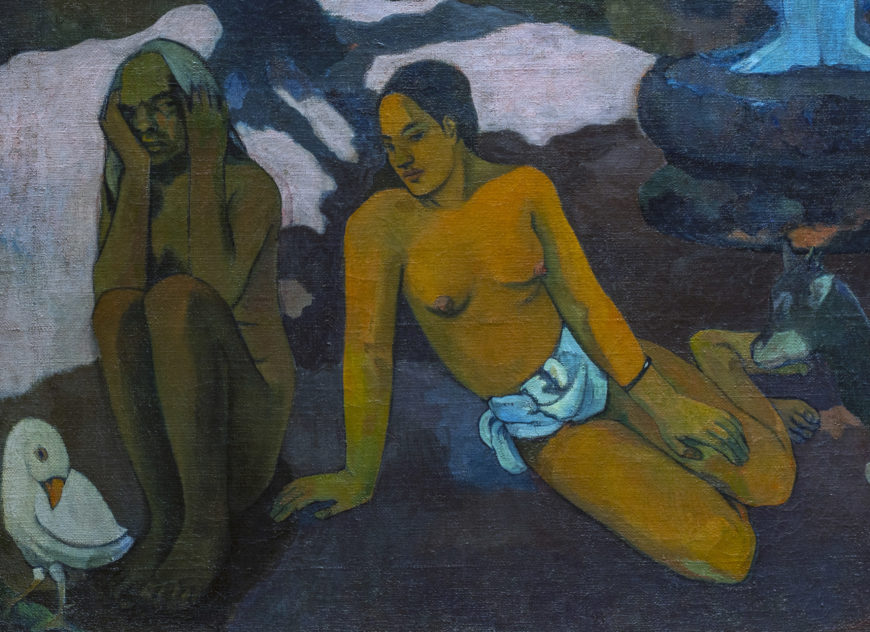
- “The Wisdom of Paul Gauguin—Artist,” International Studio, volume 73, number 291, p. 69 ↵
- Dr. Noelle Paulson, "Paul Gauguin, Where do we come from? What are we? Where are we going?," in Smarthistory, August 9, 2015, https://smarthistory.org/gauguin-where-do-we-come-from-what-are-we-where-are-we-going/ ↵

